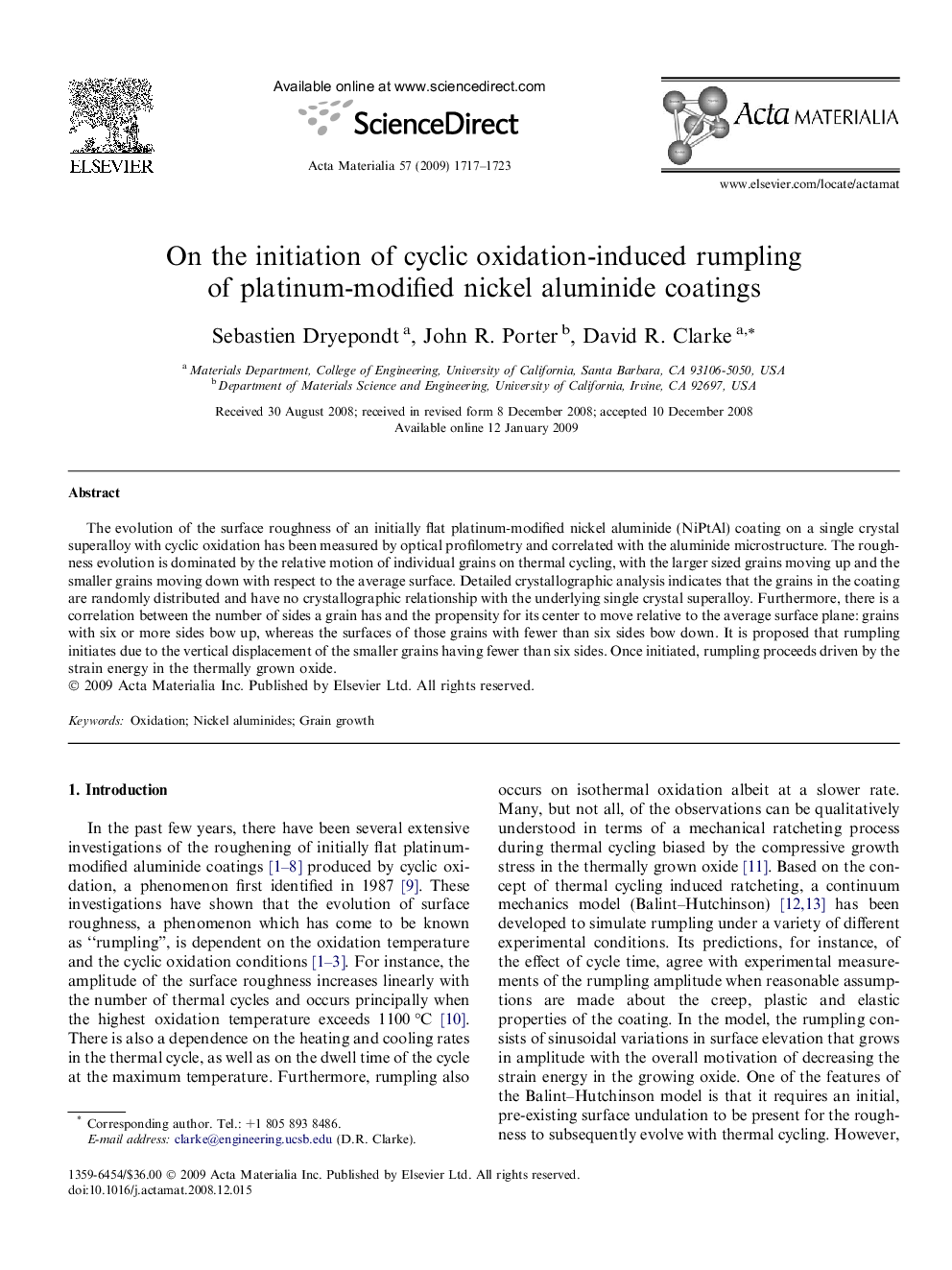| Article ID | Journal | Published Year | Pages | File Type |
|---|---|---|---|---|
| 10620767 | Acta Materialia | 2009 | 7 Pages |
Abstract
The evolution of the surface roughness of an initially flat platinum-modified nickel aluminide (NiPtAl) coating on a single crystal superalloy with cyclic oxidation has been measured by optical profilometry and correlated with the aluminide microstructure. The roughness evolution is dominated by the relative motion of individual grains on thermal cycling, with the larger sized grains moving up and the smaller grains moving down with respect to the average surface. Detailed crystallographic analysis indicates that the grains in the coating are randomly distributed and have no crystallographic relationship with the underlying single crystal superalloy. Furthermore, there is a correlation between the number of sides a grain has and the propensity for its center to move relative to the average surface plane: grains with six or more sides bow up, whereas the surfaces of those grains with fewer than six sides bow down. It is proposed that rumpling initiates due to the vertical displacement of the smaller grains having fewer than six sides. Once initiated, rumpling proceeds driven by the strain energy in the thermally grown oxide.
Related Topics
Physical Sciences and Engineering
Materials Science
Ceramics and Composites
Authors
Sebastien Dryepondt, John R. Porter, David R. Clarke,
